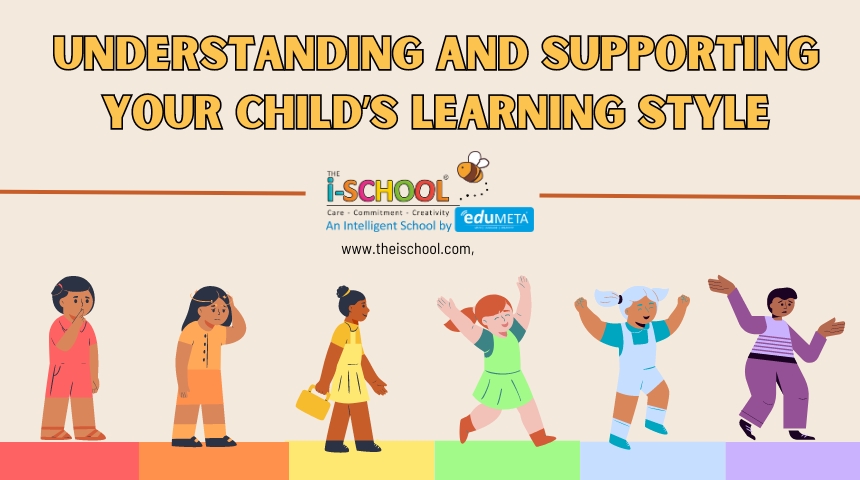Understanding and Supporting Your Child’s Learning Style

Every child is unique, and so is their way of learning. As parents, understanding and supporting your child’s learning style can make a significant difference in their educational experience and overall development. By tailoring your approach to match their learning preferences, you can help them thrive academically and personally. Let’s explore how you can identify and support your child’s learning style effectively.
What Are Learning Styles?
Learning styles refer to the preferred way a person absorbs, processes, and retains information. There are several types of learning styles, but the most common ones include:
Visual Learners: They learn best through seeing. They benefit from pictures, diagrams, and written instructions.
Auditory Learners: They learn best through listening. They understand concepts better when they hear explanations, discussions, and audio recordings.
Kinesthetic Learners: They learn best through doing. They prefer hands-on activities, experiments, and physical movement.
Identifying Your Child’s Learning Style
To understand your child’s learning style, observe how they interact with the world and respond to different types of information. Here are some tips to help you identify their learning style:
Visual Learners: Notice if your child enjoys looking at books, watching videos, drawing, or using visual aids like charts and maps.
Auditory Learners: Pay attention if your child prefers listening to stories, engaging in conversations, or following verbal instructions.
Kinesthetic Learners: Observe if your child likes to move around, build things, use hands-on activities, or learn through physical activities.
Supporting Your Child’s Learning Style
Once you’ve identified your child’s learning style, you can use specific strategies to support their education:
For Visual Learners
Use Visual Aids: Incorporate charts, diagrams, and pictures into their study materials.
Encourage Drawing: Let them draw or use visual organizers to help them understand concepts.
Read Together: Use books with plenty of illustrations and encourage them to visualize stories.
For Auditory Learners
Talk It Out: Discuss new topics and encourage them to explain concepts back to you.
Use Audio Resources: Utilize audiobooks, educational podcasts, and songs to reinforce learning.
Encourage Group Discussions: Involve them in group activities where they can listen and participate in discussions.
For Kinesthetic Learners
Hands-On Activities: Provide opportunities for experiments, building projects, and interactive games.
Movement-Based Learning: Incorporate physical activities like dance, sports, or role-playing to reinforce concepts.
Break Tasks into Steps: Allow them to engage in step-by-step activities that require physical interaction.
Creating a Supportive Learning Environment
A supportive learning environment is essential for all learning styles. Here are some general tips to create a conducive learning atmosphere at home:
Establish a Routine: Consistent study times and breaks help create a structured learning environment.
Provide Resources: Ensure they have access to necessary materials like books, art supplies, audio resources, and hands-on kits.
Encourage Curiosity: Support their interests and encourage them to explore new topics.
Be Patient and Positive: Offer encouragement and celebrate their achievements, no matter how small.
Conclusion
Understanding and supporting your child’s learning style can significantly enhance their educational experience. By recognizing their preferred way of learning and providing tailored support, you can help them achieve their full potential. Remember, every child is unique, and a little understanding and adaptation can go a long way in fostering a love for learning.
